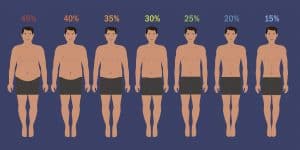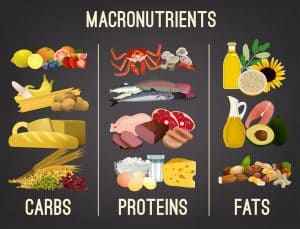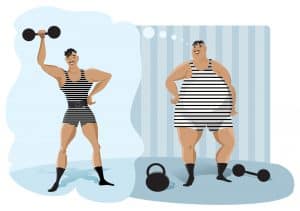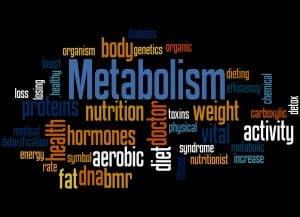Every time I made serious progress at the gym, a gain in body fat followed. My physique was suffering—I knew it was time to change tactics.
I was hesitant to try a low-carb diet—and afraid that my energy stores would deplete to zero. However, I learned how to fine-tune this regime and achieve the results I set out for.
I cover that and more in this guide to low-carb diets for bodybuilders.
What Are Carbohydrates? The Science
The prevailing attitude around carbs these days oversimplifies the science. Let’s look at how carbohydrates work, so we have a better understanding of the role they play in our diets.
Monosaccharides are the basic building blocks of carbs. These simple sugars then bind together to form complex molecules.
Depending on the combination, these compounds end up as disaccharides (simple carbs) or polysaccharides and oligosaccharides (complex carbs). Our bodies convert these into glucose for fuel.
This process is what causes a rapid increase in blood sugar, which is measured by the glycemic index (GI). The higher a food is on the index, the more pronounced the spike.
This sharp rise and fall in glucose levels are key, and one reason why many bodybuilders choose a low-carb diet when cutting to avoid it.
What's a low-Carb Diet?
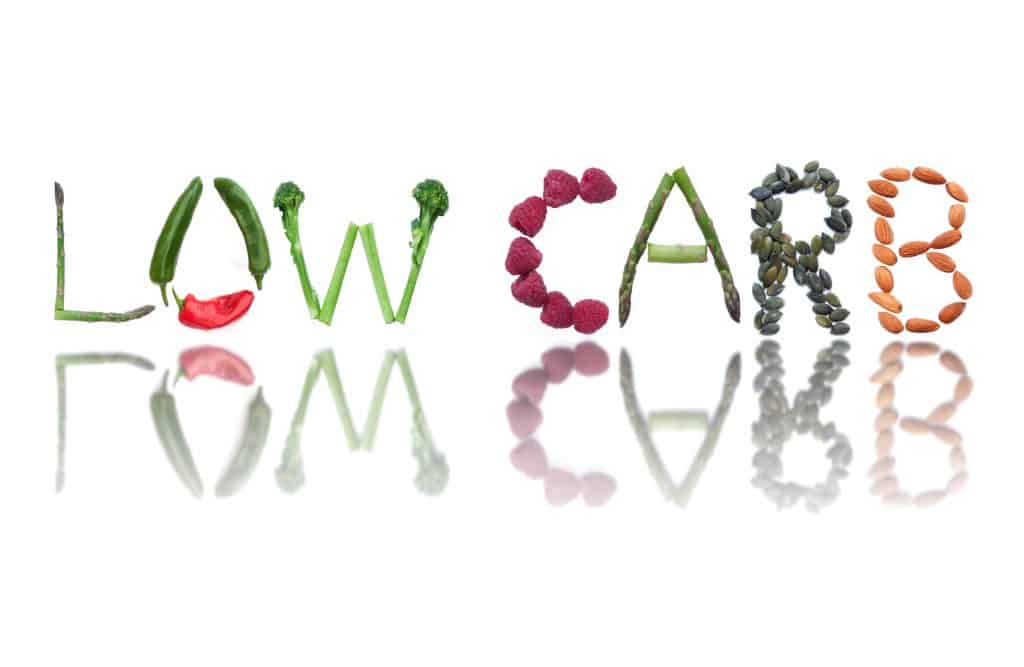
For years we’ve heard that fat is bad for our health. You don’t have to go far in a grocery store to see “low fat” or “no fat” options lining the shelves. Coincidentally, this myth has played a part in America’s obesity epidemic.
Studies have since proven this wrong—that we have no reason to fear fat, especially in moderation and even more so, healthy fats. A low-carb diet eases restrictions on this food group.
It does, however, limit simple sugars and starches.
Our bodies require carbohydrates to function efficiently, and a low-carb diet is meant to help you find a better energy balance. It’s not implying that you have to cut them out entirely, only decrease your intake.
As a result, your blood sugar stabilizes, and insulin levels drop. This hormone is responsible for directing fat cells to take in glucose. When levels are high, more fat can be stored than is necessary.
When executed correctly, this diet has been definitively linked to successful weight loss because fat burns quicker when insulin is stable. With a reduced food intake added into the scenario, you’re more apt to shed those pounds.
You might be wondering how one can maintain a low-carb diet when you need this macronutrient for daily activity, and more importantly, to fuel those intense sessions. Here are a few points to keep in mind.
- Type of carbs matter—those high in fiber such as beans, whole grains, and vegetables are all suitable choices (lower on the GI index).
- Vary your amounts based on activity—known as carb cycling. On rest days your consumption will be the least.
- Carb-heavy cravings—timing is everything. The best time to partake is pre or post-workout, where your body is primed to use them for energy.
How low is a low-carb diet for Bodybuilders?
When cutting back on carbohydrates, the definition of low-carb isn’t clear-cut.
A safe percentage of carb intake is dependent on the individual, their level of activity, and weight-loss goals.
Nutritional guidelines currently suggest that the average diet should include 45-65 percent of carbohydrates per day. So, technically, anything below that can be considered “low carb.”
The general opinion is that low-carb dieters target around 10 to 25 percent of their daily totals. Anything below this would be deemed very low carb or as it’s become known as—the ketogenic diet, especially when the amount of protein is also dropped in favor of fats.
The Pros and Cons: Low-Carb Diets for Bodybuilders
Below we dip into the pros and cons of this popular weight-loss strategy.

The Pros
1
Effective Fat Burning
As mentioned earlier, going low-carb decreases insulin, along with glucose and glycogen stores. This promotes efficient utilization of fatty acids for fuel because there’s less surplus.
Furthermore, since quick-digesting carbohydrates are being limited, you’re relying heavily on complex carbs that release slowly into the bloodstream.
This also keeps you satiated (feeling full) for longer, which, in turn, encourages you to eat less. Research agrees that a low-carb diet is a solid metabolic strategy where weight loss is concerned.
2
Stabilizes Blood Sugar Levels
As we’ve seen, reducing the consumption of simple carbs means your blood sugar becomes more stable.
This is particularly beneficial for type 2 diabetes patients or those suffering from other metabolic conditions.
On a low-carb diet, your energy levels are also likely to be more consistent throughout the day.
3
A Relaxed Diet for maintaining muscle mass
Compared to other diets, a low-carb approach still offers an array of nutritional foods you can eat—providing you skip the simple sugar and starches.
The best part? Healthy fats and plenty of protein are fair game.
Furthermore, research indicates that people following low-carb diets are more likely to abide by the “rules.”
The Cons
1
Carb Withdrawal
You could say many of us are addicted to our french fries and soda. As a result, a few days into your low-carb diet, you may find that you have uncontrollable cravings.
You might even experience physical or psychological discomfort. Headaches, mood swings and even digestive issues are not uncommon.
Typically, you can expect this drawback to last for a few days up to two weeks.
2
Decrease in T-3 Levels
One of the most significant drawbacks for bodybuilders is that low-carb diets may decrease your T-3 levels. This thyroid hormone plays a role in your metabolism.
If one remains on a low-carb diet for an extended period, it can adversely impact long-term workout goals. Imagine coming off the diet, ready to bulk up, only to find that your metabolic rate is no where near what it was before?
3
Risk of Fatigue
Even though low-carb diets can enhance energy levels, if not done correctly, they can also significantly deplete them.
With low glycogen stores, the body begins to use fatty acids for fuel—this process can be a slow one. In the weight room, this translates into a heavy body and difficulty in breaking-through plateaus.
Be careful—this effect can also last longer than the diet itself.
Differences Between Low-Carb and Keto
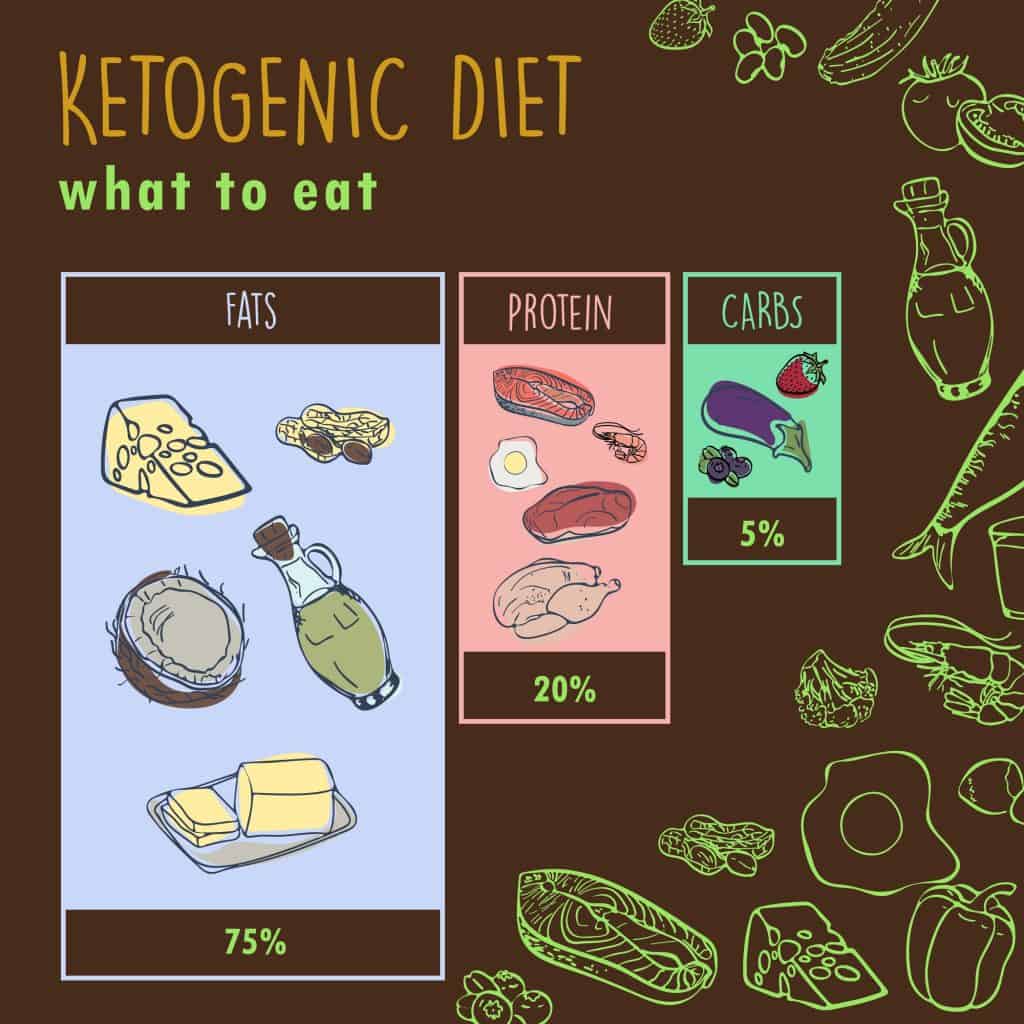
It’s important to distinguish between low-carb and Keto because one is much more intense than the other.
The Keto diet does its best to remove carbs almost to their entirety. That means you can’t consume foods such as beans, fruits, pasta, and rice. As a result, your body enters into a physiological state called ketosis, where it begins to rely wholly on fats for fuel.
We’ve mentioned fatty acids above as they relate to low-carb diets. Because this strategy includes a higher amount of carbs, the body never fully enters into a state of ketosis—although it may dip in and out since glycogen stores are lower than usual.
A low-carb diet also includes more protein, whereas a Keto diet focuses primarily on consuming fats (70 percent of the diet). Therefore, it is not always possible to maintain muscle mass if you’re on a keto diet for extended period of time, let alone building muscle.
While low carb includes a plethora of low-sugar vegetables such as broccoli and cauliflower, you will attempt to be more careful of over-consuming vegetable due to the cab content.
Low-Carb Meal Planning
It’s a common myth that low-carb dieters can eat whatever they want, so long as their carbs don’t exceed their determined percentage. Although, not entirely accurate, but it’s not completely absurd, either.
Low-carb diets naturally suppress the appetite and limit your carb intake. Because of this, most beginners are advised to focus on eating the right things—and worry less about reducing calories overall.
Over time, if you don’t meet your weight-loss goals, a caloric deficit may be necessary, but it doesn’t always come down to that.
1
Determine Macros
Macronutrients are the food groups our bodies require daily—carbohydrates, fats, and protein. You should divide these into appropriate ratios.
Suffice to say, your protein consumption will make up the bulk of your meals.
As we’ve seen, most low-carb diets include around a 10 to 25 percent carbohydrate intake. But how does this transpire into weight and grams?
Because this is dependent on you and your weight-loss goals, here are some categories for reference.
(a)
Very Low-Carb
A stricter diet sees a percentage of up to 10 percent, so, 20-50 grams per day.
For those with severe weight issues, food addictions, including sugar and Type 2 Diabetes, you may need to cut back at maximum to achieve your desired results.
(b)
Moderate Low-Carb
This group follows a carb percentage of around 10 to 25 percent of their overall macronutrients. It equates to 50-100 grams daily.
For those with a higher tolerance for carbs, or individuals that only need to shed a few pounds, this plan may be best.
To avoid long-term adverse effects, most bodybuilders stick with this category.
Protein and Carbs
Now that we have an approximation of the number of carbohydrates to consume, we can determine our protein and fat percentages to complete the equation.
Most low-carb diet plans contain close-to equal ratios between protein and fat. If you’re looking to retain or gain muscle, stick to a higher protein intake.
Using the following low-carb ratios as a guide:
Protein: 50 percent Fats: 35 percent Carbohydrates: 15 percent
These percentages indicate how to divide your meals on any given day. We then use these numbers to calculate our portions based on caloric intake and grams.
2
Calculate Calories and Grams
To convert the above percentages into cold-hard facts, we use the BMR (basal metabolic rate) and mass maintenance calculator below. It’s a practical tool for figuring out your daily intake based on the level of activity (energy expended) and height.
For example, for a 35-year-old, 200 pound, 6-foot male who works out 3-4 times per week, his caloric needs amounts to 2,617 calories per day.
Remember, this is without a deficit (for now).
We then plug in our percentages and divide them by the number of calories per gram. Fat contains 9 calories per gram, while carbohydrates and protein carry 4 calories.
Use the following calculation to determine your grams per day.
Protein: 50 percent of 2617 = 1308 calories / 4 = 327 grams per day Fat: 35 percent of 2617 = 916 calories / 9 = 101 grams per day Carbohydrates: 15 percent of 2617 = 392 calories / 4 = 98 grams per day
Instead of doing these calculations, use the macro calculator below.
Use these weights to determine your portions. A kitchen scale will be useful here, so it’s not left to guesswork.
I recommend opting for one with an automatic tare function. It allows you to subtract the weight of your container without having to do so manually.
3
What to Eat
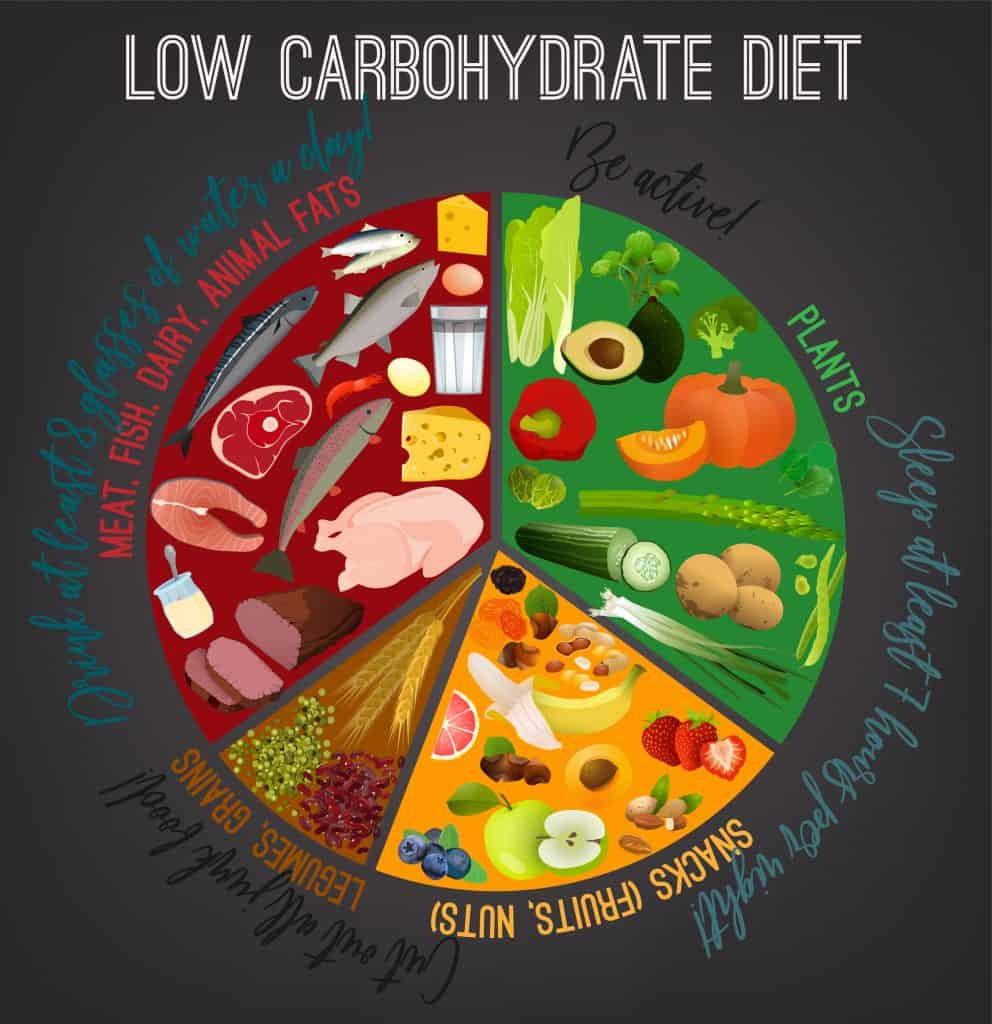
So far, you have a brief insight into the foods you can and cannot partake in. To make it easy on you, we’ve put together a list. These are not comprehensive but present an indication for “yes” and “no” items.
- Food to Enjoy
- Eggs.
- Dairy such as cheese and yogurt.
- Nuts and seeds.
- Lean meat.
- Fish and seafood.
- Natural fats (butter and olive oil).
- Low-sugar fruits (watermelon, berries, avocado, grapefruit).
- Coffee and tea.
- Red wine (occasionally).
- Low-GI vegetables (cabbage, spinach, zucchini).
- Peas, lentils, corn, quinoa (in moderation).
- Food to Avoid
- Beer.
- Pasta.
- Starchy root vegetables (potatoes, parsnips).
- Rice.
- Bread.
- Soda and juice.
- Sugar-laden fruits (bananas, grapes, mango).
- Candy and donuts.
- Prepared condiments (usually high in sugar).
You want to base an effective low-carb diet around fresh, unprocessed foods.
Processed items become problematic when trying to distinguish the carb content. If you have to eat these items, make sure to read the label. If anything indicates a “net carb” percentage, take a second look.
Net carbs can be described as the number of digestible carbs a product contains, less the fiber content. For example, if the item has 15 grams of carbohydrates and 7 grams of fiber, you’re left with a total of eight.
Many processed items are low in fiber with high sugar content, so it’s important to know what you’re getting.
4
Make It Happen
It’s easier said than done, we know. You’ve already determined your caloric intake based on macros and translated that into grams. So, the hardest part is over.
Before we throw an example meal plan your way, here are some tips to help you along.
- Plan ahead—we can’t stress this enough. With poor organizational skills, you’ll be stuck eating god-knows-what that you found in the back of your pantry. Choose one day a week to prepare for your upcoming meals. This means researching recipes, grocery shopping, and prep work.
- Be realistic—you don’t have all the time in the world. This is especially the case if you’re working full-time—on top of your workouts and more. Look for 30-minute meals and snacks to execute with minimal effort involved.
5
Example Low-Carb Meal Plan
Based on our calculations, we determined our caloric intake will be about 2617 calories per day: 98 grams of carbohydrates, 101 grams of fat, and 327 grams of protein.
Keep in mind that these numbers represent our example male who works out 3-4 times per week.
Therefore, create portions based on your macro calculations and calories.
We’ve chosen to keep to three meals a day, plus two snacks. Many claim that higher frequency leads to curbing hunger and higher metabolism, but studies show that’s not necessarily the case.
Meal 1
Scrambled eggs - 2 large Sauteed spinach - 2 cups Butter - 1 tablespoon Mixed berries - 1 cup
Meal 2
Avocado shake - 0.5 avocado Whey protein - 2 scoops Greek yogurt - 1 cup
Meal 3
Bunless burger - 5-ounce lean patty Bacon - 3 slices Edamame - 1 cup Olive oil - 1 tablespoon
Meal 4
Greek yogurt - 1.5 cup Whey protein - 2 scoops Almonds - 0.5 cup Mixed berries - 1 cup
Meal 5
Grilled chicken - 2 breasts Quinoa - 0.5 cup Asparagus - 1 cup Olive oil - 1 tablespoon
6
Track Your Progress
One of the most important steps in your low-carb diet is to track your progress. You’ll need to make adjustments—according to your weight-loss goals and workouts.
Watch the scale but don’t obsess over it. If your goal is lose fat, reduce the maintenance calorie intake above by 20-30%. So, for our example above that would be 1832- 2093 calories.A safe fat-loss strategy is to lose approximately 1 to 2 pounds per week. If you notice an uptick for any reason, check in on your activity levels and consider adjusting your macros.
On the other hand, if your workout intensity increases or even better, muscle mass, you’ll need to raise your calories accordingly.
Getting Enough Protein
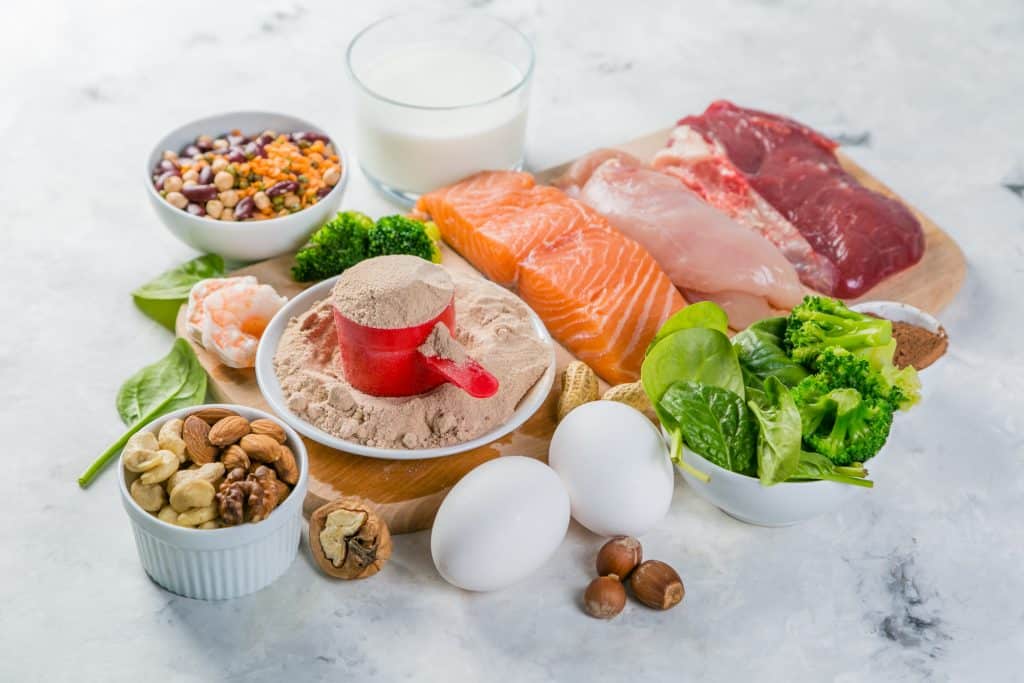
In the fitness community, protein is crucial regardless of your diet. But with a low-carb scheme, it’s even more vital for retaining muscle mass and enhancing recovery after your workouts.
- Stick with lean meats—grilled options will help you keep your cholesterol in check while you focus on healthier fats such as olive oil. Salmon and other oily fish are also alternatives. For red meat, opt for grass-fed or organic.
- Include eggs—a protein staple and low GI. They’re also very versatile—one of the few foods that you can consume at any mealtime.
- Take advantage of plant proteins—if you haven’t explored “fake” meats such as tofu (20 grams per cup) or lentils (17 grams per cup), now is the time. Plant-based means less “bad” fat to boot, plus you’ll receive a host of vitamins and minerals along the way.
- Don’t dismiss dairy. The carbs are minimal, and the protein content varies. For example, cheddar cheese contains approximately 9 grams of fat and 6 grams of protein per ounce. It may sound like a small amount compared to red meat. But little portions do add up when you’re counting macros every day.
With this said, we wouldn’t be sharing the complete picture if we didn’t address the overabundance of protein.
If you don’t consume your protein wisely, it can add stress on the liver and kidneys in the form of acidic build-up. This can lead to conditions such as gout.
Keep firm tabs on your macros and think strategically before you throw down one too many bun-less burgers.
Low-Carb Diet Mistakes
It’s true there’s less to worry over with a low-carb diet versus other weight-loss strategies. There are, however, a few pitfalls that too many people have fallen into. Avoid these, and you’ll be golden:
- Don’t fear food—a common problem for new bodybuilders and dieters in general—in that they become afraid to eat at all. Since most people consume too many carbs, cutting them out seems like a significant blow to the diet. Be open to experimenting with new foods and give yourself an adjustment period to enjoy the change.
- Avoiding fat—as mentioned, fat is not to be feared either. If you steer clear of trans fat (found in processed and fried foods), you have a slew of healthier alternatives. Otherwise, you could end up severely energy-depleted come recovery time.
- Forgetting about fiber—this nutrient is a carbohydrate, but it doesn’t break down into sugar. Take advantage of this and enjoy fiber-rich carbs, including leafy greens. Don’t forget about seeds—chia seeds, for example, are high in fiber, protein, and healthy fat but low in carbs. Fiber eases digestion and helps curb hunger too.
- Relying on packaged foods—meal planning is essential for a reason. Without it, it’s nearly impossible to know the quality of what you’re eating. Many “gluten-free” options, for example, are actually high in carbs and fat (not always the “good” kind). When you’re in a pinch, it may be necessary. More than that, it could do you more harm than good.
- Stuck in a rut—a diet can soon become monotonous without variety. It’s easy to plan for grilled chicken breasts every night, but that will rapidly get old. Space out your meals, so you don’t feel stuck with the same food day in day out.
Last but not least, you don’t have to go it alone! Seek out some buddies at the gym who may have insight or ask your partner to join you in the cutting crusade. You can call on them for support when you want to throw in the towel.
The Takeaway
We laid to rest some of the mystery around carbohydrates—how they work, why we need them, and how to use them more efficiently.
For bodybuilders, there is a way to reign in your carb intake without knocking your performance levels back to last year at the gym. With careful calculations and new nutritional goals, your diet can prove beneficial for gains long-term.
Use this low-carb diet for bodybuilders as your guide in setting up a strategy that’s right for you.








